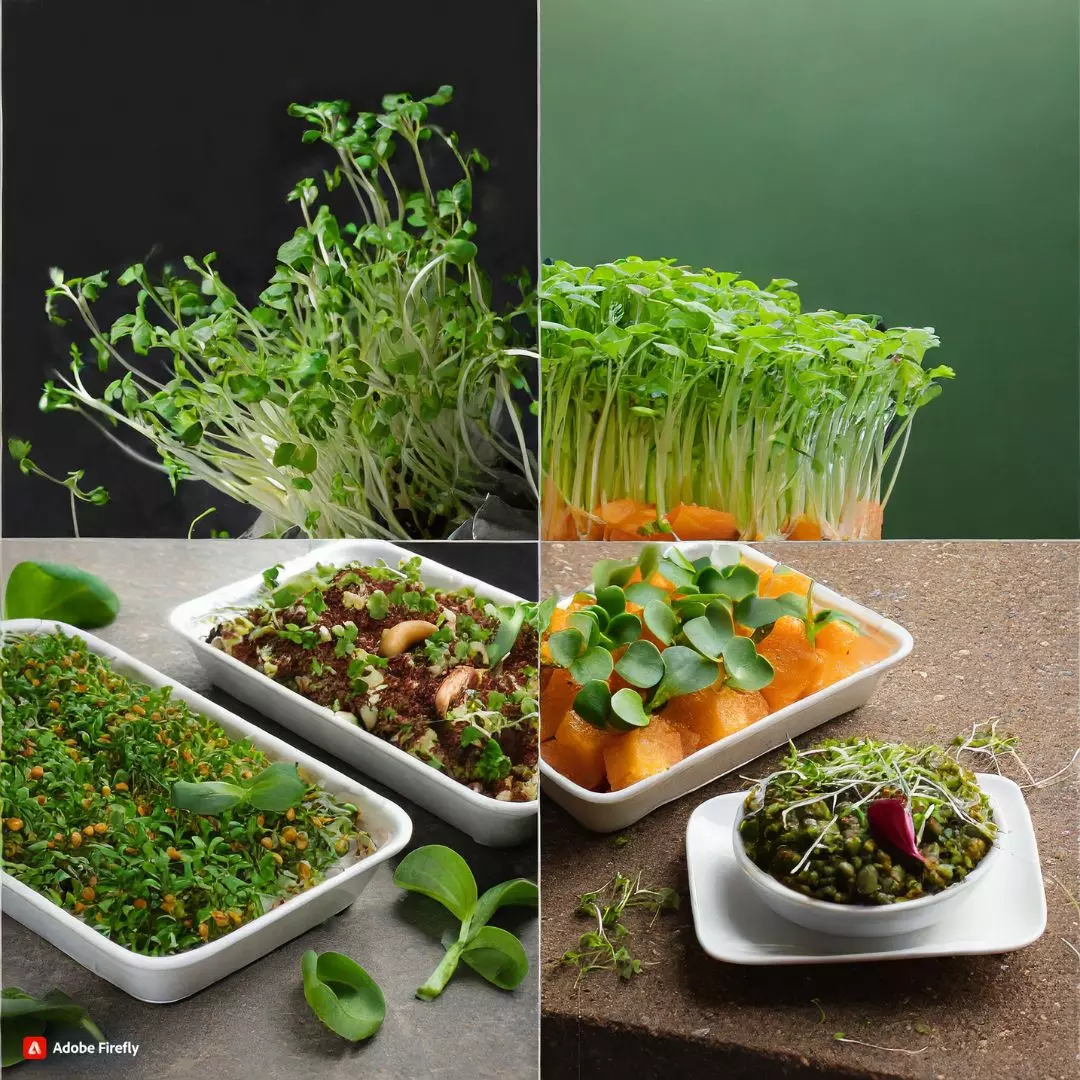In a delightful shift, the gastronomic landscape of Indian kitchens is undergoing a transformation, and at the heart of this culinary revolution are the vibrant and nutrient-packed microgreens. Moving beyond the exclusive realm of high-end dining establishments, these miniature greens have found their way to the everyday tables of the middle class, capturing the palates and curiosity of a new generation of food enthusiasts. But what exactly makes microgreens so enchanting, and why are they becoming an indispensable part of contemporary Indian cuisine?
The allure of microgreens lies in their nutritional richness. These sprouted versions of edible vegetables or herbs have evolved into nutritional powerhouses, offering an abundance of essential nutrients such as calcium, iron, zinc, magnesium, potassium, ascorbic acid, tocopherols, and betacarotene. Recent research conducted by Punjab Agricultural University reveals that microgreens not only meet but often exceed the Estimated Average Requirement (EAR) for essential nutrients, earning them the esteemed title of a superfood. Their nutrient density, ranging from 1.5 to 2 times that of mature leaves, positions them as a culinary treasure trove.
Distinguishing themselves from their sprout counterparts, microgreens undergo a unique planting and growth process, allowing them to develop fully formed stems and leaves. The harvest period, typically spanning from 7 to 21 days depending on the vegetable type, contributes to a richer nutritional composition and an enhanced flavor profile that sets them apart on the plate.
The surging demand for microgreens has led the industrial sector to commercialize their production. Varieties such as peas, beans, red cabbage, kale, pumpkin, radish, and spinach are cultivated in controlled indoor environments, minimizing inputs and eliminating the need for pesticides. This strategic approach ensures a steady supply of these vibrant greens, making them accessible to a broader audience.
Potential Health Benefits
Beyond their culinary appeal, microgreens boast potential health benefits, making them an attractive addition to a balanced diet. Studies suggest that the antioxidant-rich composition of microgreens may contribute to a reduced risk of heart disease, Alzheimer’s, diabetes, and various cancers.
As microgreens secure their place in Indian kitchens, ongoing research explores their impact on development, nutritional content, and post-harvest treatments. Challenges persist in ensuring the safety and quality of microgreens, prompting the food industry to address issues that have arisen with fully grown vegetables.
In conclusion, microgreens are not just a fleeting culinary trend; they represent a nutritional revolution enriching the diversity and vibrancy of Indian cuisine. As these tiny greens continue to grace the plates of households across the nation, their potential health benefits and evolving prospects make microgreens an exciting and integral facet of the dynamic culinary tapestry in contemporary India.
Also Read: Government Unveils Massive Crackdown On GST Scam, Exposes 29,273 Fraudulent Firms











